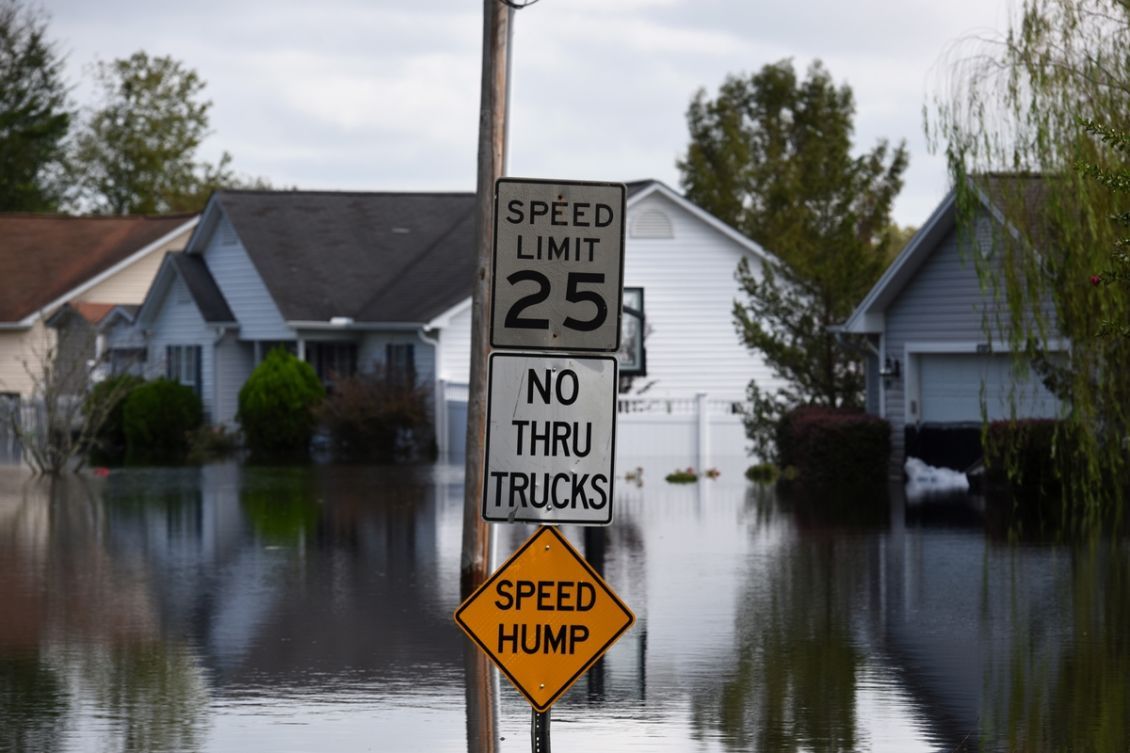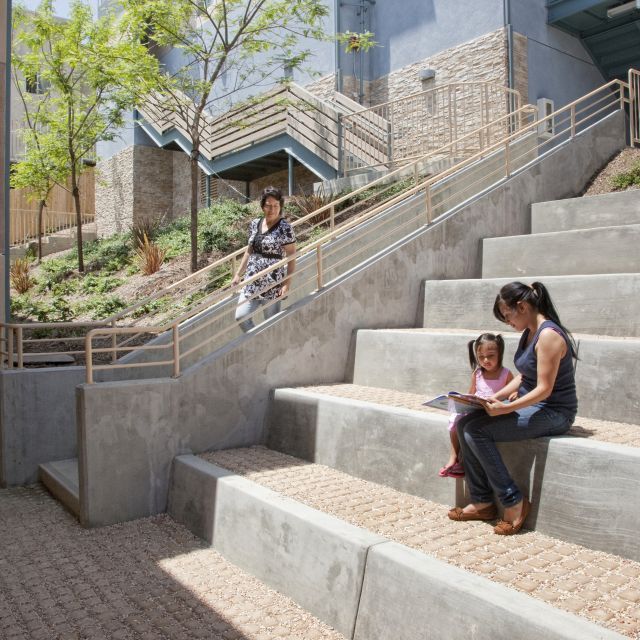This piece is part of our series, Policy Actions for Racial Equity (PARE), which explores the many ways housing policies contribute to racial disparities in our country.
New York City broke records in 2023 when three times the normal amount of rainfall fell on the city during the month of September. More than a third of the month’s total rainfall fell in a single day, triggering severe flooding across the city, and hitting hardest in areas that are home to many of the city’s most vulnerable residents. It marked the second major flood New Yorkers have experienced in three years.
As climate change intensifies, severe flood events have become more commonplace across the entire U.S. Extreme flooding disproportionately impacts low-income communities and people of color who, because of historic and continuing systemic barriers and inequities, often live in areas that are more prone to flooding, in housing stock not well suited to weather such events, and in communities that lack adequate disaster plans as well as the financial means to evacuate and/or temporarily relocate residents.
The legacy of discriminatory housing policies in the U.S. has forced many people of color into neighborhoods that are most vulnerable to natural disasters and these impacts are being exasperated by climate change. But by investing in strategies to create climate-ready housing, we can mitigate the heightened risk of extreme flooding and other natural disasters in these communities. Certifying to Enterprise Green Communities provides developers with a roadmap for building and retrofitting sustainable affordable homes that can protect residents, properties, neighborhoods, and lessen the impacts of these events.
The Threat of Extreme Flooding in Redlined Communities
Redlining, a discriminatory practice that denied financial services such as mortgages and insurance to people in certain areas based on their race or ethnicity – which effectively prevented people of color from buying homes in certain neighborhoods – has had lasting impacts to the present day on racial segregation and inequities. A study conducted by Redfin reported that across 38 metro areas, more than $107 billion worth of homes at elevated risk for flooding were found in historically redlined communities – 25% more than in non-redlined communities.
This greater risk of flooding is also linked to present-day racial inequity in the U.S., as 58% of households in these communities are people of color. Neighborhoods with a history of housing discrimination are often in low-lying areas, have fewer trees and more pavement, resulting in less pervious ground and greenery to absorb rain and more erosion caused by faster moving stormwater. These neighborhoods also often have outdated infrastructure systems, adding to these communities' inability to handle severe rain events.
Low-income communities faced the most severe impacts when Superstorm Sandy hit New York City in 2012 and approximately 80,000 public housing residents lost power, heat, and hot water for nearly two weeks and many were impacted by severe flooding. This catastrophe disproportionately hurt people of color as Black and Hispanic residents make up 44% and 45% of public housing residents in New York, respectively.
The heavy rainfall and devastating floods that occurred in New York City in September 2023 were lesser in scale than Superstorm Sandy and Hurricane Ida but serve to support community leaders in some of the hardest-hit areas who say the city remains unprepared to manage such paralyzing floods.
Enterprise Green Communities: Building for Resilience
Green Communities Criteria is a program by and for affordable housers, providing cost-effective measures to build more efficient, healthier and resilient homes. Investing in resilience before disaster strikes is the most cost-effective approach to safeguarding residents and their homes. According to a report by the National Institute of Building Standards, every $1 invested in pre-disaster mitigation results in a $13 savings in post-disaster expenses; an investment that makes good, long-term business sense for property owners. The criteria encourage project teams to identify and implement strategies designed to help minimize the impacts of floods both before and after an event.
One strategy (criterion 2.1) involves limiting development on sensitive lands like wetlands, prime farmland, and floodplains. Preservation of these ecologically sensitive lands lessens escalating climate change impacts by providing a buffer for storm surge, preserving pervious ground for rain to soak into, slowing down runoff and reducing erosion. Green Communities also requires teams to implement effective stormwater management (criterion 3.4), capturing and treating stormwater runoff and relieving pressure on the storm sewer system, helping reduce downstream flooding and safeguarding people and buildings as the frequency of storms continues to rise. The Green Communities criteria also requires incorporating materials that properly manage moisture through the foundation, roofing, and wall systems (criterion 6.8), which can help keep water out during a storm.
Resilience through Preparedness
Disaster preparedness and emergency management are crucial to keeping communities resilient against climate-related disasters such as flooding. The Green Communities program contains criteria that provide critical electrical service, safe and accessible water and clear emergency protocols in times of disaster. By promoting resilient energy systems, the criteria encourage design teams to floodproof individual units by locating critical building equipment above flood elevation levels to ensure that the building can still be of service to residents in the event of flooding (criterion 5.9).
With such practices in place, residents can return home after a severe event and maintain access to necessities like refrigerated insulin and clean water for cooking and personal hygiene – avoiding displacement and sustaining community. This is especially relevant for low-income communities who often do not have the financial means to temporarily relocate, may be at risk of losing their jobs, and cannot wait for their units to be repaired or rebuilt through federal disaster recovery funds that take years to implement.
Incorporating the Green Communities strategies outlined here and detailed in the criteria provides resilience against flooding through improved site preparedness and building strategies that enable residents to return to their homes post-event. By championing resilient building and disaster preparedness practices, we can work towards eliminating residual impacts of historical redlining and provide a more secure and sustainable future for all.
For more information or to get started on your own certification, visit our Green Communities portal or reach out to us at certification@enterprisecommunity.org.
We encourage all who believe in the need to create a just society to read, discuss, and share the PARE blog series as we learn and act to address the impacts of housing policies on racial equity in America. We also invite you to join us in this conversation, by suggesting additional topics and sharing resources for how we can advocate for greater racial equity. If you’d like to offer feedback on our body of work, please reach out to the Public Policy team. You can also check out our blog and subscribe to our daily and bi-weekly policy newsletters for more information on Enterprise’s federal, state, and local policy advocacy and racial equity work.

